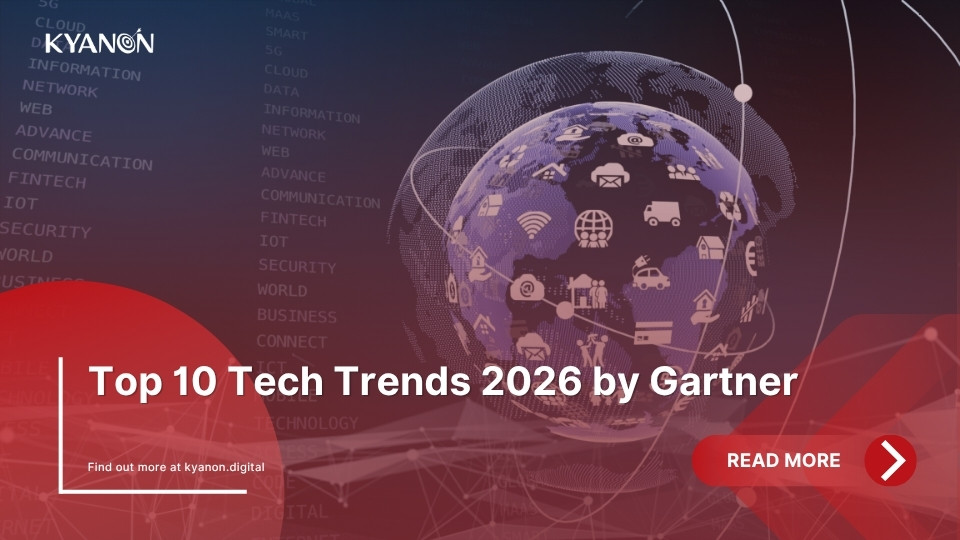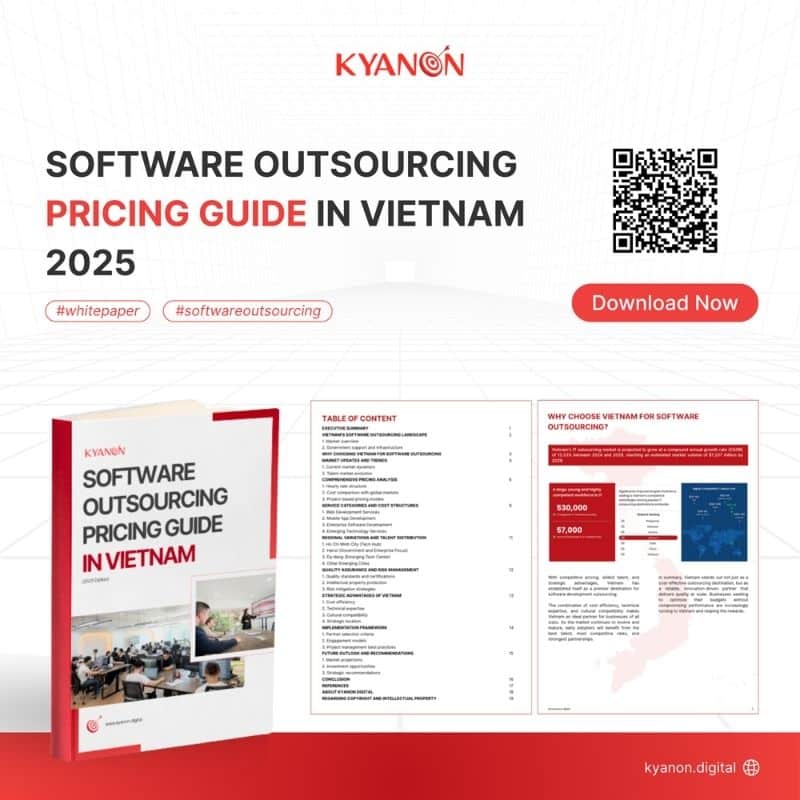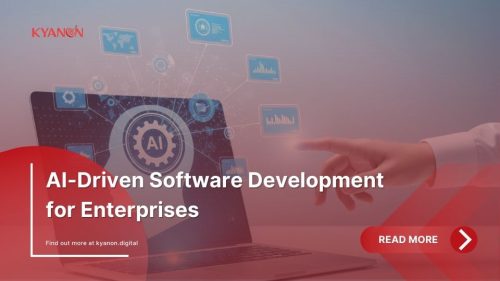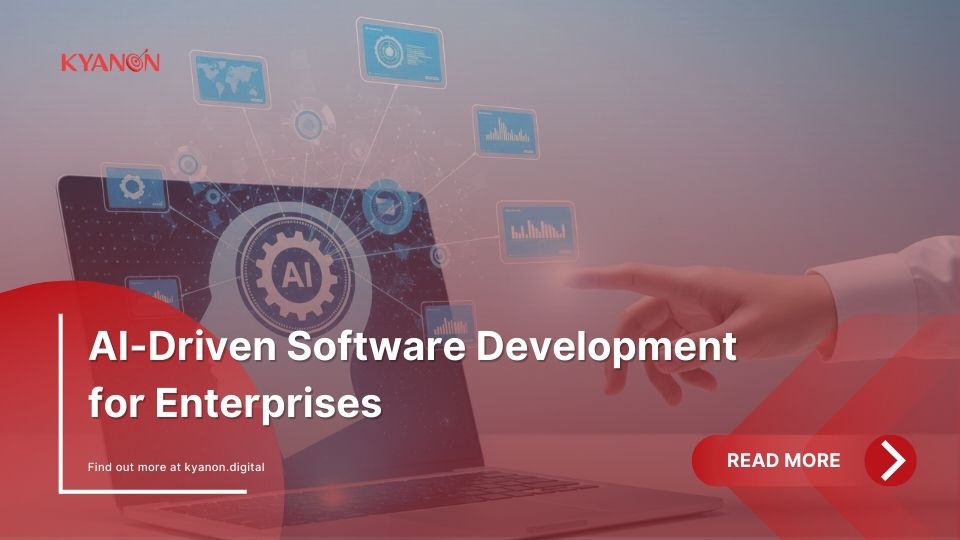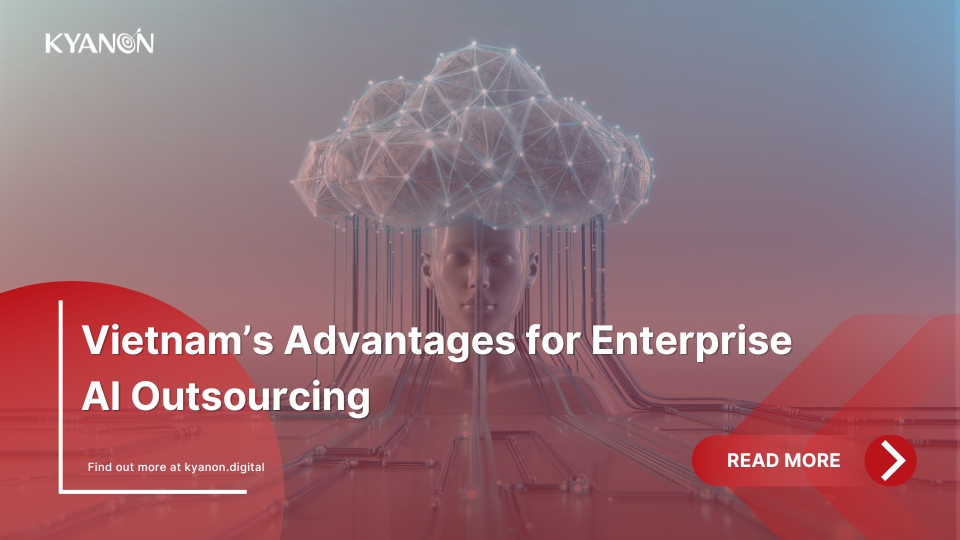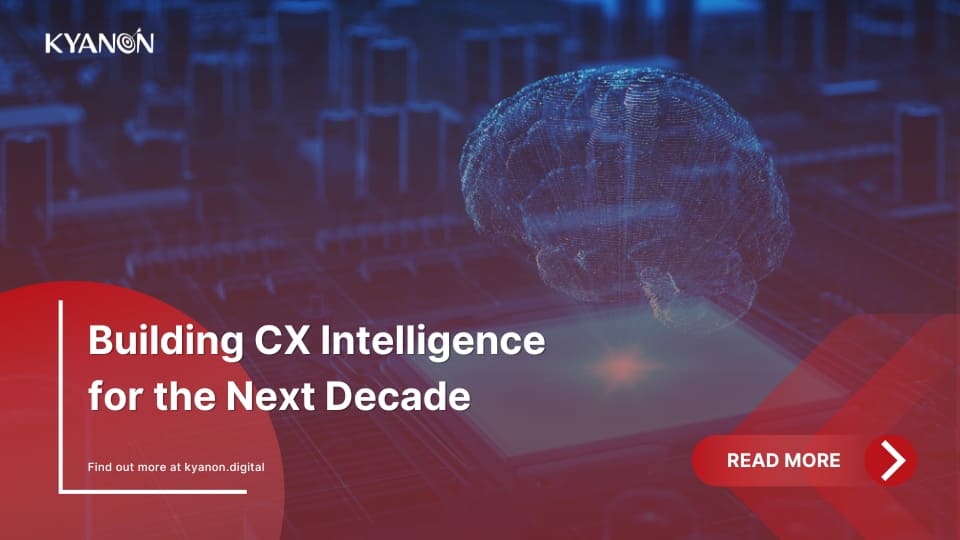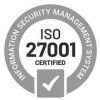In today’s fast-evolving digital landscape, staying ahead of tech trends is no longer optional; it’s a competitive advantage. For C-level executives and innovation leaders, every strategic move depends on understanding how technology will reshape industries, operations, and customer expectations.
According to KPMG, ~63% of executives worldwide reported a positive impact on profitability or performance from digital transformation in the prior 24 months.
As one of the world’s most trusted voices in technology research, Gartner has long guided enterprises in navigating disruption and identifying growth opportunities. Understanding Gartner’s business technology outlook is essential for any organization aiming to lead rather than follow.
In this article, Kyanon Digital will explore Gartner’s Top 10 Tech Trends for 2026. This forward-looking forecast reveals where the next wave of strategic technology trends will emerge and how they’ll shape the future of business transformation.
Key takeaways
Gartner’s top 10 tech trends 2026 spotlight an AI-driven future. Businesses must embrace:
- AI-native development & supercomputing for speed and scale
- Confidential computing & AI security for trusted data use
- Multi-agent & domain-specific AI to boost efficiency and precision
- Physical AI & preemptive cybersecurity for smarter, safer operations
- Digital provenance & geopatriation to ensure transparency and compliance
- Leaders should prioritize strategic adoption, leverage managed and offshore services, and align tech investments with ROI and resilience
Further reading:
- Technology Stack for Mobile Apps: A Guide to Scalability and ROI
- Data Intelligence Driving SEA’s Digital Commerce Growth
- Customer Experience Design for Southeast Asia’s Future
Why must C-level executives follow tech trends in 2026?
In a world where innovation cycles shrink each year, tracking tech trends is no longer just an IT priority; it’s a boardroom strategy. For executives shaping the future of their organizations, aligning with Gartner’s business technology outlook and global tech forecasts ensures every decision supports long-term growth, agility, and competitiveness.
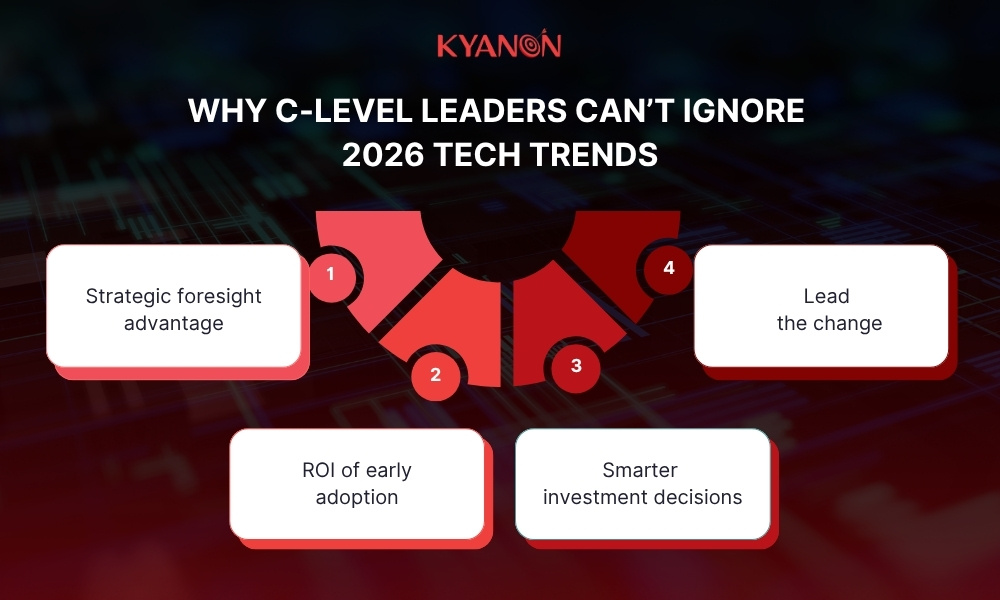
Competitive advantage through strategic foresight
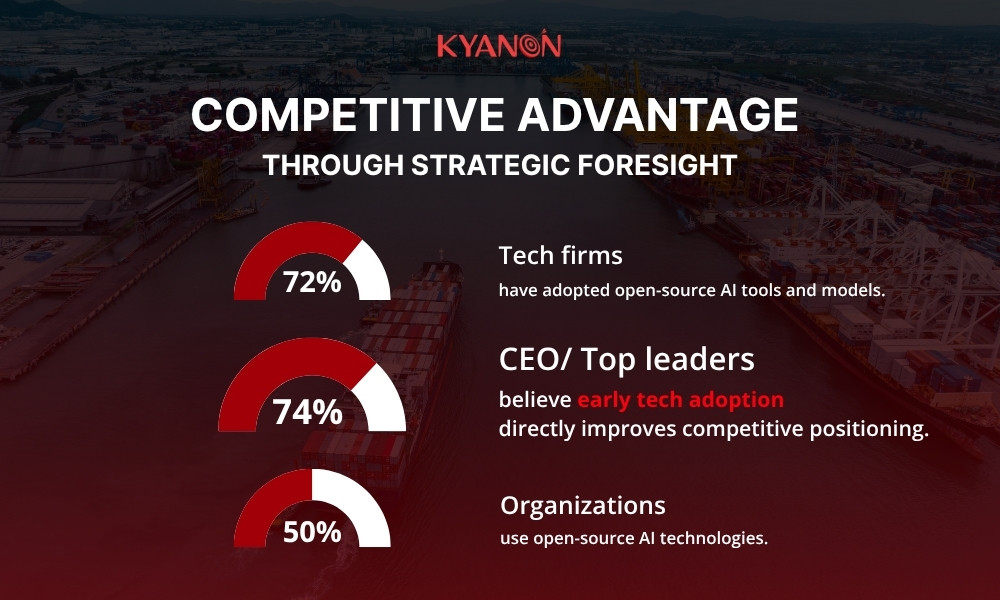
- According to Gartner, 74% of CEOs believe early tech adoption directly improves competitive positioning.
- According to McKinsey, more than half of organizations now leverage open-source AI technologies as spanning data, models, and development tools, with adoption rates climbing to 72% among technology firms.
- Gartner’s strategic technology trends act as a blueprint, helping enterprises predict shifts before they disrupt markets, especially in AI, cloud, and automation.
Digital transformation ROI for early adopters
Organizations that integrate AI, data, and automation early capture measurable competitive advantages, from operational efficiency to market leadership.
| Adoption Stage | Key Gains (Based on Verified Insights) |
| Early Adopters |
|
| Mainstream Adopters |
|
| Late Adopters |
|
Source: McKinsey, Gartner, Deloitte.
Global tech forecasts drive smarter investment
Across regions, digital adoption is transforming how enterprises compete and grow. C-level leaders are prioritizing investments in technologies that enhance agility, productivity, and long-term resilience.
AI, automation, and data infrastructure are emerging as core pillars of enterprise transformation, enabling smarter, faster decision-making.
By aligning with Gartner’s technology predictions, executives can focus capital on innovations that deliver sustainable value and strategic advantage.
The executive imperative: Lead, don’t react
For today’s enterprise leaders, ignoring tech trends means surrendering agility to competitors who act faster. With Gartner’s business technology outlook, executives gain clarity on the why, where, and how of technology investment, empowering them to lead transformation, not chase it.
Following tech trends isn’t about keeping up; it’s about staying ahead. The organizations that act on global forecasts today will define tomorrow’s digital economy.
Transform your ideas into reality with our services. Get started today!
Our team will contact you within 24 hours.
Top 10 tech trends for 2026, according to Gartner
Quick overview table of the top 10 tech trends for 2026 by Gartner
|
Tech Trend |
Quick Overview |
Key Players |
| AI-Native Development Platforms | Generative AI tools enable small teams to build faster, cut costs, and scale innovation globally. | CIOs, IT partners, platform engineers, and developers |
| AI Supercomputing Platforms | High-performance computing powers large AI models and analytics for data-driven enterprises. | CIOs, infrastructure & DevOps, finance |
| Confidential Computing | TEEs secure sensitive data in use, ensuring global privacy and compliance. | Security leaders, compliance, cloud teams |
| Multiagent Systems (MAS) | Specialized AI agents automate complex workflows and improve scalability. | CIOs, DevOps, integration teams |
| Domain-Specific Language Models (DSLMs) | Industry-tuned AI models deliver higher accuracy and compliance for regulated sectors. | Data scientists, domain experts, compliance |
| Physical AI | Robots, drones, and smart machines bring AI into real-world operations. | Operations, engineering, safety leaders |
| Preemptive Cybersecurity (PCS) | Predictive AI prevents attacks before they happen, strengthening global defenses. | CISO, security, risk & compliance |
| Digital Provenance | Tracks and verifies data and content origins to ensure trust and transparency. | Security, legal, data governance |
| AI Security Platforms (AISPs) | Unified platforms protect AI models from injection, leakage, and misuse. | CIOs, security, DevOps |
| Geopatriation | Localizes workloads for sovereignty, compliance, and resilience amid global uncertainty. | CIOs, cloud architects, legal & finance |
1. AI-native development platforms
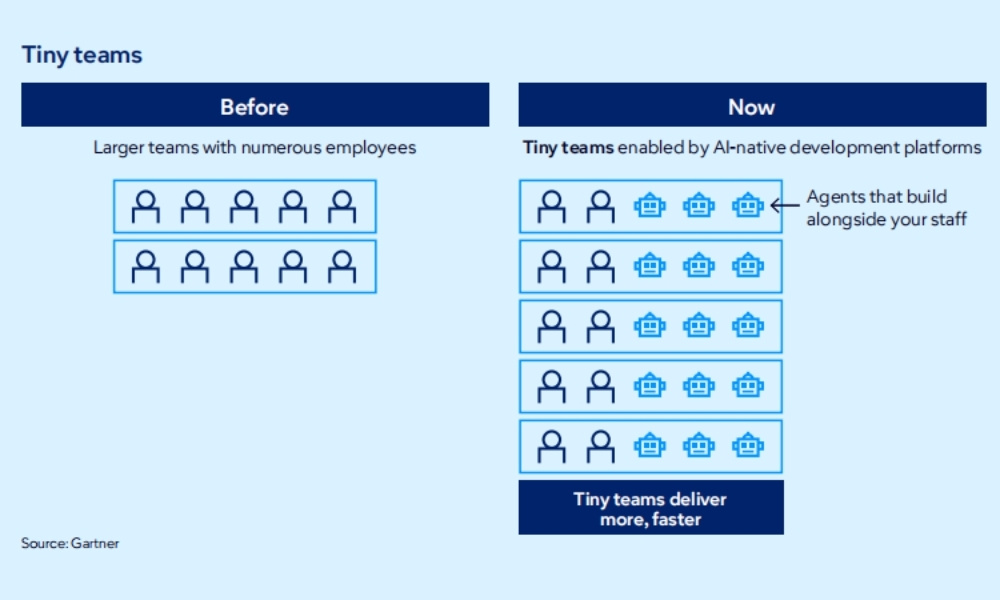
AI-native development platforms use generative AI to build software faster and easier, from one-shot code tools to no-code “vibe coding” systems and AI agents that co-create applications.
Why it’s trending:
CIOs seek faster delivery and agility, while CEOs and CFOs value cost efficiency. These platforms empower small teams to build more with less, shifting the “build vs. buy” model toward in-house innovation and productivity.
Key insight: AI-native development redefines how enterprises innovate, scale, and compete in the digital era.
Steps for business:
- Build a platform team: Centralize management of AI-native tools and ensure governance
- Secure the process: Apply AI guardrails to prevent code and data risks
- Start small: Pilot low-risk projects to prove value fast
- Adopt AI-first: Integrate AI into every new development initiative
- Upskill teams: Train staff in prompt engineering and responsible AI
2. AI supercomputing platforms
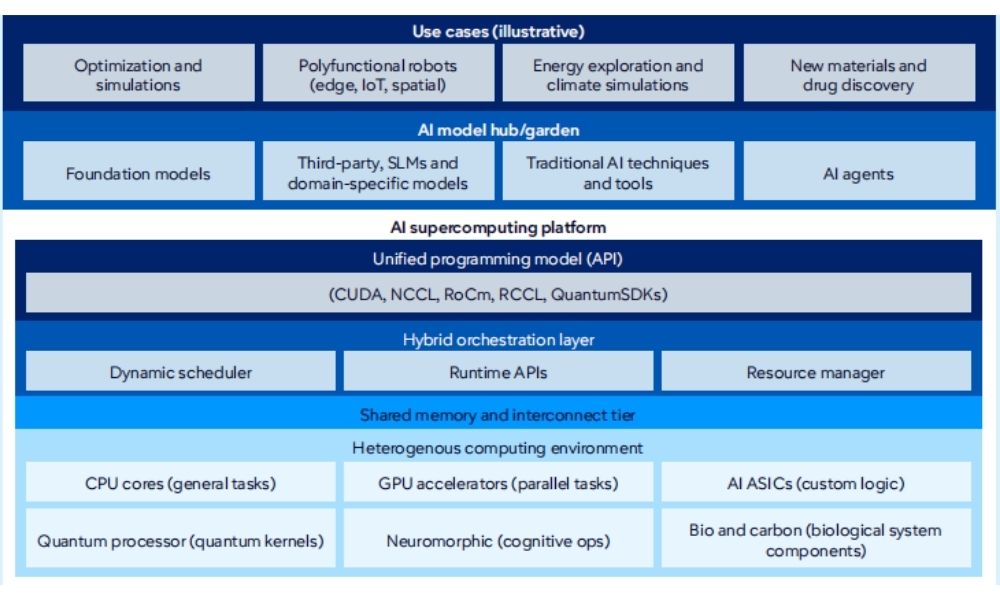
Purpose-built infrastructure blending CPUs, GPUs, AI ASICs, high-bandwidth networks, and orchestration software to power large-scale models, sophisticated analytics, and simulation workloads.
Why it’s trending: Rising AI complexity is pushing enterprises to adopt supercomputing infrastructure for faster training, smarter analytics, and scalable performance.
Key insight:
- Accelerates AI innovation and reduces processing time for large models
- Enables hybrid and cloud-native deployment flexibility
- Enhances decision-making through faster, data-driven insights
- Builds a future-ready foundation for enterprise-scale AI adoption
Steps for business:
- Identify high-impact workloads: focus on AI training, modeling, and data-heavy use cases
- Invest in unified software stacks: adopt open standards for better flexibility and integration
- Develop a phased integration strategy: add AI accelerators gradually and upskill its teams
- Streamline development: leverage hybrid orchestration to balance cost and performance
- Plan for governance and compliance: ensure data security, sustainability, and regulation alignment
Result: Achieve faster delivery, improved insights, and future-ready infrastructure that supports scalable AI growth.
3. Confidential computing
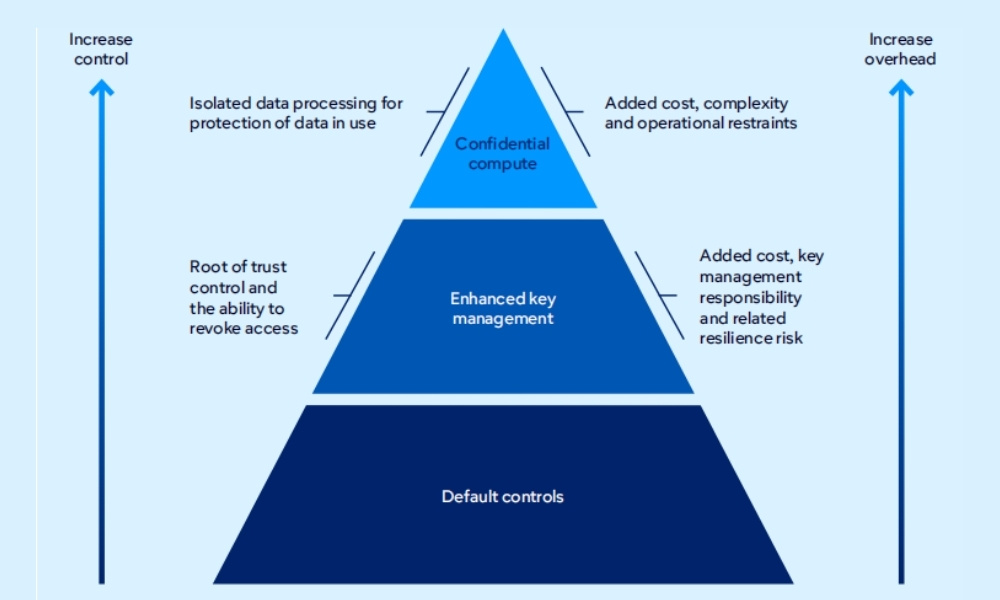
Confidential computing protects data while it’s being processed using hardware-based trusted execution environments (TEEs), ensuring security even from cloud providers.
Why it’s trending: Stricter privacy laws, data localization rules, and expanding AI workloads make in-use data protection essential for secure and compliant operations.
Key insights:
- Safeguards sensitive data across hybrid and multicloud environments
- Enables compliance with global privacy and data sovereignty regulations
- Strengthens trust for AI and analytics involving confidential information
- Supports secure collaboration without exposing raw data
Steps for business:
- Audit sensitive workloads that require in-use protection
- Pilot TEEs for proprietary and AI model workloads
- Enable secure data collaboration across teams and partners
- Establish independent cryptographic key management
- Prepare integration and orchestration plans for hybrid environments
4. Multiagent systems
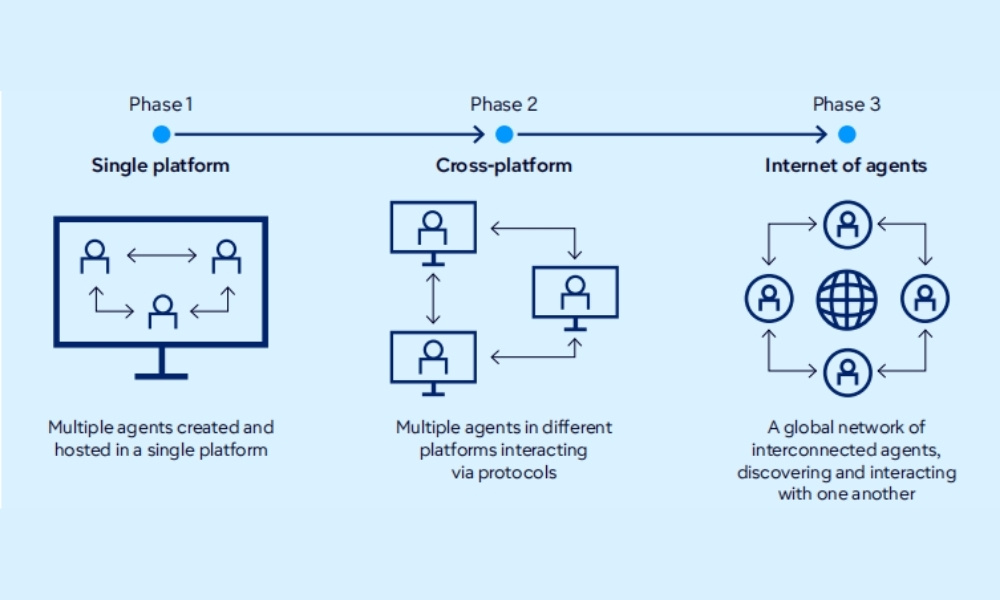
Multiagent systems (MAS) use networks of specialized AI agents that collaborate to complete complex workflows, improving efficiency, scalability, and automation compared to single-agent models.
Why it’s trending: As standalone AI models struggle with multistep and cross-platform tasks, MAS offers modular automation and seamless integration, driving rapid enterprise adoption worldwide.
Key insights:
- Boosts scalability and workflow efficiency through specialized agents
- Enables modular, reusable automation components
- Enhances system reliability and observability across platforms
- Future-proof enterprise AI strategies through interoperability
Steps for business:
- Identify high-value workflows suitable for MAS pilots
- Design modular agents focused on specific business functions
- Implement API governance and real-time monitoring tools
- Adopt open interoperability standards for cross-vendor collaboration
- Upskill teams on MAS frameworks and change management
5. Domain-specific language models (DSLMs)
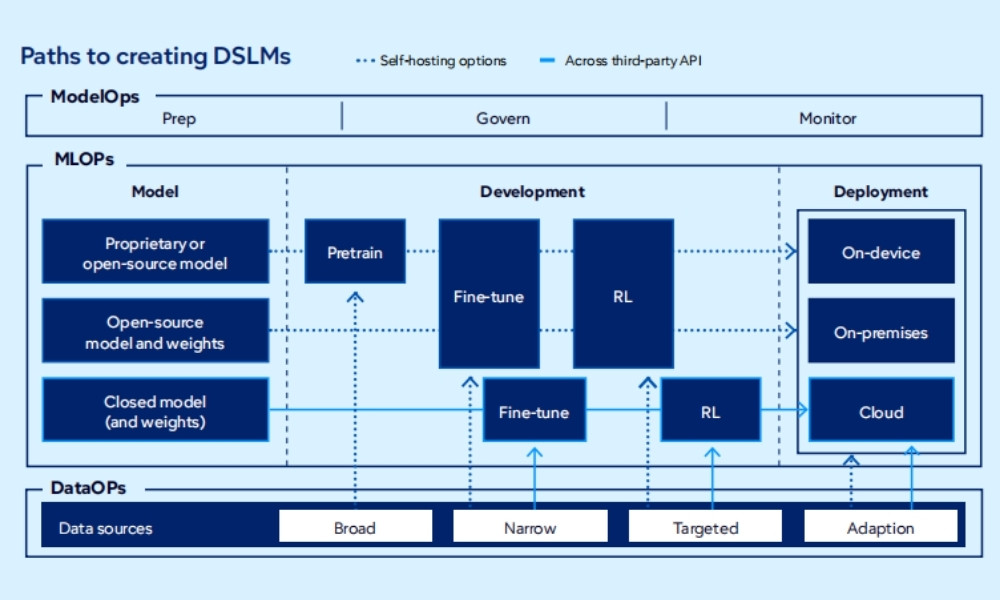
Domain-specific language models are AI systems trained on industry-focused datasets to deliver higher accuracy, compliance, and relevance than general-purpose LLMs.
Why it’s trending: Enterprises demand measurable business value from AI – DSLMs meet this need by reducing errors, improving precision, and lowering costs across high-stakes functions like finance, healthcare, and HR.
Key insights:
- Increases model accuracy and compliance in regulated industries
- Speeds up AI deployment with domain-ready data and logic
- Improves trust and explainability of AI decisions
- Drives faster ROI and sustainable cost control
Steps for business:
- Identify high-impact workflows where generic models underperform
- Strengthen data governance and quality standards
- Pilot DSLMs in critical domains such as finance or healthcare
- Build cross-functional teams of IT, SMEs, and compliance experts
- Continuous activities: monitor, explain, and optimize model performance
6. Physical AI
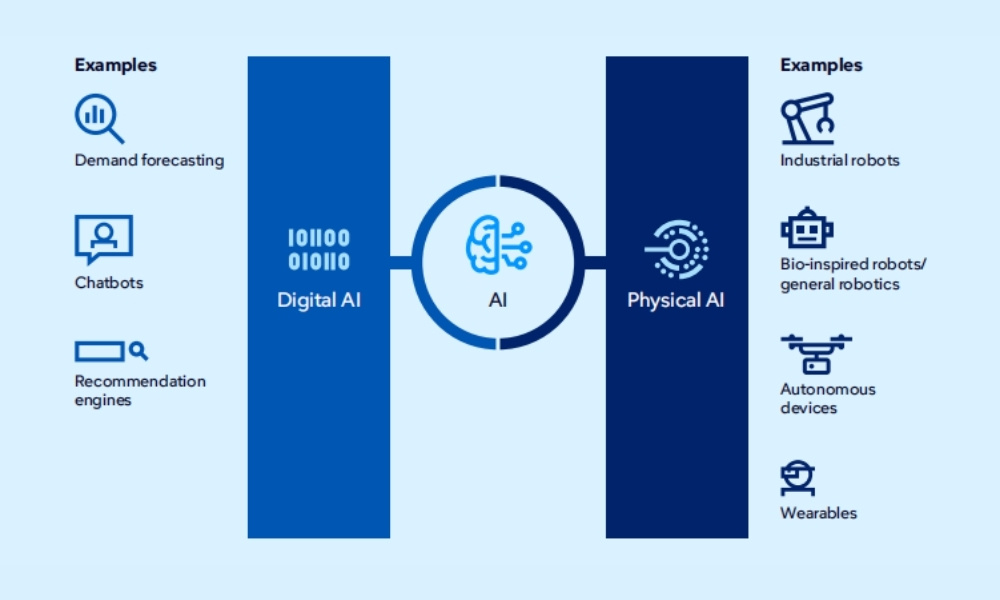
Physical AI integrates artificial intelligence into real-world systems, from robots and drones to autonomous vehicles and smart devices, enabling machines to sense, decide, and act in dynamic environments.
Why it’s trending: Enterprises are extending the productivity of digital AI into the physical world, using intelligent machines to automate operations, improve safety, and boost efficiency across industries like logistics, manufacturing, and healthcare.
Key insights:
- Bridges digital intelligence with real-world automation
- Enhances productivity, precision, and operational safety
- Enables continuous data-driven learning from physical environments
- Expands AI’s impact from software workflows to physical execution
Steps for business:
- Identify physical tasks suitable for automation (e.g., warehousing, inspection)
- Invest in robotics, IoT sensors, and autonomous systems integrated with AI models
- Pilot small-scale deployments to validate efficiency and safety outcomes
- Build cross-functional teams combining AI, operations, and engineering expertise
- Establish governance for safety, maintenance, and human-machine collaboration
7. Preemptive cybersecurity
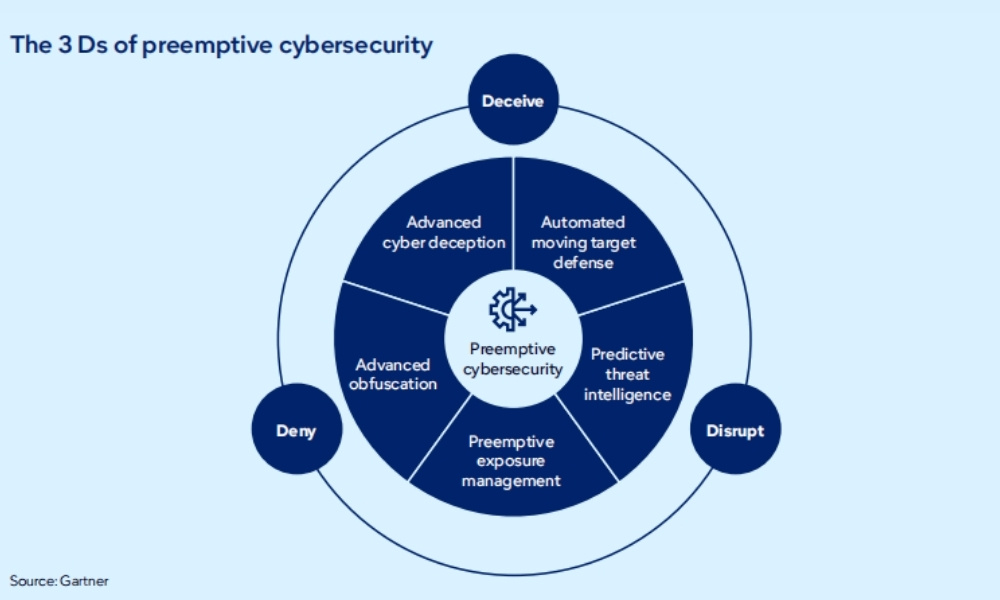
Preemptive cybersecurity uses AI-driven defense systems to anticipate, disrupt, and neutralize attacks before they occur – shifting from reactive protection to proactive prevention.
Why it’s trending: As AI-powered threats multiply across networks, clouds, and IoT, proactive defense is becoming essential for maintaining trust, compliance, and market competitiveness.
Key insights:
- Detects and stops cyber threats before they impact operations
- Reduces financial and reputational risk through predictive defense
- Strengthens compliance with global data protection standards
- Ensures long-term business resilience and customer confidence
Steps for business:
- Assess current security architecture to identify critical gaps
- Pilot PCS solutions in high-risk or mission-critical environments
- Define vendor selection criteria with a predictive capability focus
- Communicate PCS strategy to executives and stakeholders
- Integrate PCS into existing security, risk, and compliance frameworks
8. Digital provenance
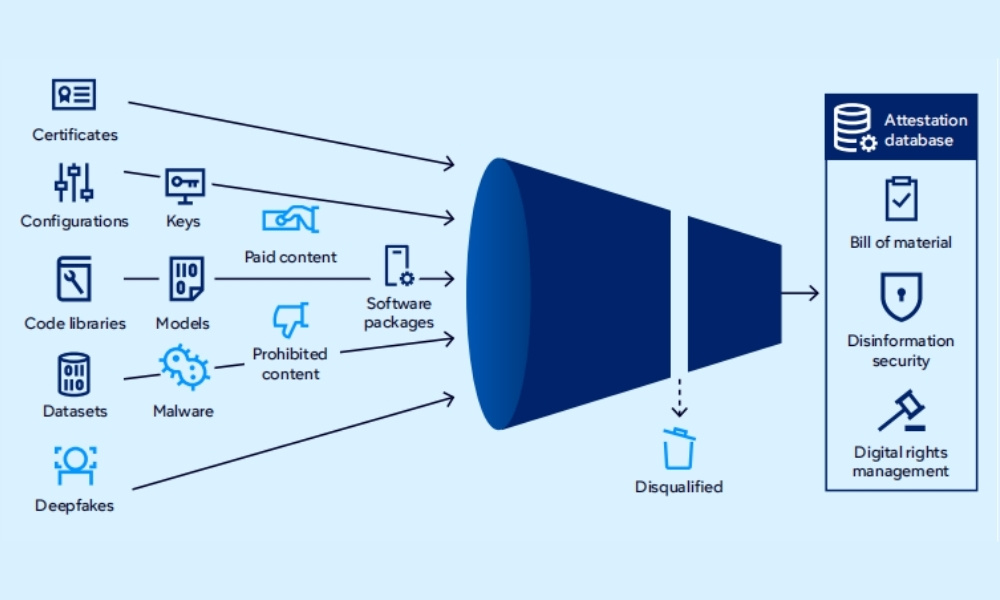
Digital provenance verifies the origin, authenticity, and integrity of data, software, and media using tools like bills of materials (BOMs), attestation databases, and digital watermarking, ensuring transparency and trust in AI-driven ecosystems.
Why it’s trending: With growing risks from code tampering, open-source vulnerabilities, and deepfake content, organizations need verifiable authenticity to protect reputation, compliance, and customer trust.
Key insights:
- Confirms data and software integrity across supply chains
- Safeguards against disinformation, impersonation, and IP theft
- Enables compliance with AI transparency and content regulations
- Builds stakeholder and consumer confidence in digital assets
Steps for business:
- Deploy software and machine learning BOMs to verify component origins
- Implement attestation databases for cryptographic proof of authenticity
- Integrate disinformation detection tools into security frameworks
- Apply digital watermarking for AI-generated content transparency
- Strengthen governance across IT, legal, and compliance functions
9. AI security platforms (AISPs)

AI security platforms consolidate controls and governance tools to protect both third-party AI services and custom-built AI applications from emerging threats like prompt injection, rogue agents, and data leakage.
Why it’s trending: With rapid AI adoption, traditional security frameworks can’t safeguard AI workflows, driving enterprises to adopt AI-specific protection platforms for resilience and compliance.
Key insights:
- Secures the entire AI lifecycle – from model training to deployment
- Prevents misuse through monitoring, guardrails, and access control
- Simplifies management by unifying AI and app security controls
- Enables compliance with evolving AI risk and governance standards
Steps for business:
- Assess current AI risk landscape across workflows and tools
- Pilot AISP solutions in high-risk or mission-critical applications
- Choose unified platforms that combine AI usage and app security
- Integrate automated AI security testing into DevOps pipelines
- Continuously monitor vendors and innovations for advanced protection
10. Geopatriation
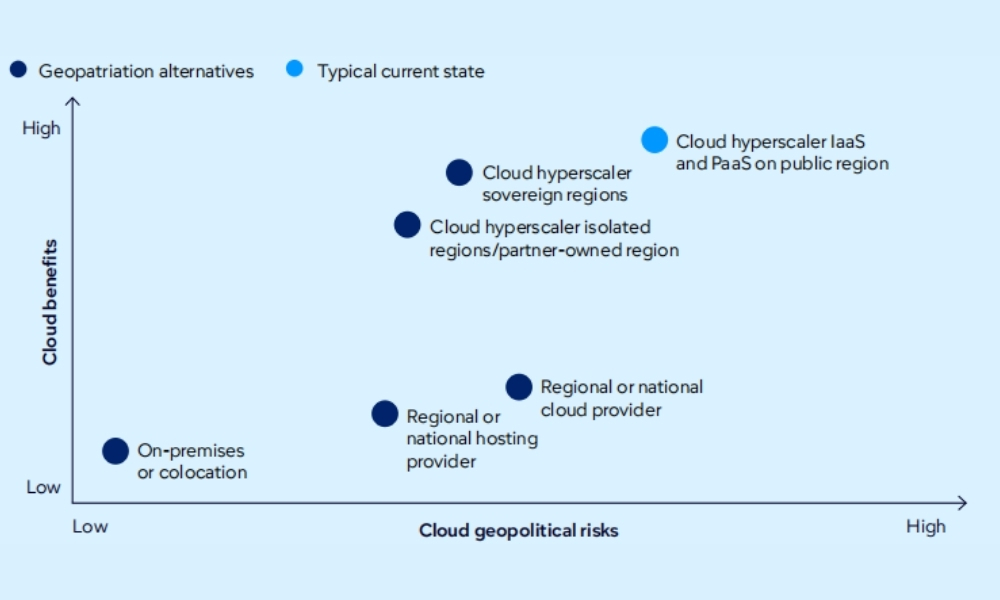
Geopatriation is the relocation of digital workloads from global hyperscale clouds to sovereign or local environments to reduce geopolitical, regulatory, and data-sovereignty risks.
Why it’s trending: Rising geopolitical uncertainty and stricter regional compliance laws are prompting enterprises to localize critical workloads for greater control, security, and resilience.
Key insights:
- Reduces exposure to cross-border data and compliance risks
- Enhances trust and operational continuity in sensitive regions
- Balances cloud agility with sovereignty and resilience
Steps for business:
- Assess and rank workloads based on sensitivity and geopolitical exposure
- Evaluate sovereign cloud and local hosting options for critical data
- Design hybrid strategies combining sovereign, public, and on-prem environments
- Implement strong governance and sovereignty frameworks
- Continuously monitor geopolitical and regulatory trends to adapt placement strategies
How businesses respond to tech trends
Step-by-step approach for enterprise tech adoption
- Prioritize strategically: Focus on tech trends that deliver measurable ROI and align with long-term business goals
- Pilot before scaling: Test high-impact innovations, such as AI-native platforms, XR, or automation through small, controlled pilots
- Build a transformation roadmap: Create a clear digital strategy connecting people, processes, and technology for sustainable growth
- Empower leadership: Encourage CIOs, CTOs, and CFOs to align investments with strategic priorities and governance frameworks
- Measure and adapt: Use data-driven KPIs to evaluate success and continuously refine adoption efforts
Tips for C-level executives
- Treat emerging technologies as strategic enablers, not experiments
- Align adoption with global market trends and evolving customer needs
- Strengthen collaboration between IT and business units for faster innovation
Why choose Kyanon Digital for your business?
Expertise Trusted by Fortune 500 Clients
With deep experience serving Fortune 500 companies, we deliver tailored, high-impact solutions that meet the unique demands of global enterprises.
A World-Class IT Team
Our 500+ IT experts, spanning consulting, project management, technical architecture, software engineering, QA, DevOps, and AI/ML, are committed to excellence in every project.
Quality at the Core
Certified under ISO 9001, our quality-first approach guarantees precision, reliability, and continuous improvement.
Uncompromising Security
ISO 27001-certified, we integrate robust security into every process, leveraging advanced technologies to protect your data against evolving threats.
Conclusion
The question for every enterprise leader in 2026 is clear: Are you leading or lagging in tech adoption?
Now is the time to act, transforming insights into strategy and strategy into competitive advantage.
Assess your organization’s tech readiness, explore future-proof digital solutions, and accelerate transformation with the guidance of our experts.
Contact Kyanon Digital today to turn tech trends into real business outcomes!

